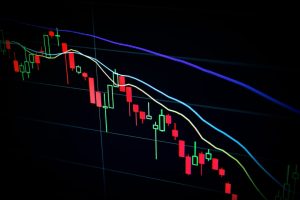Forex trading is a complex and dynamic process that involves the buying and selling of currencies from around the world. In order to be successful in forex trading, traders need to constantly analyze the market and make informed decisions based on various factors. One of the most important factors that traders need to consider is signals. Signals play a crucial role in determining the direction of the market and can help traders make profitable trades. In this article, we’ll explore what signals mean in forex and how they can be used to make better trading decisions.
What are forex signals?
Forex signals are indicators that help traders identify potential trading opportunities in the market. These signals are generated by a variety of sources, including technical analysis, fundamental analysis, and market sentiment analysis. They provide traders with information about the current market conditions, including trends, price movements, and potential price points. Forex signals can be delivered in different formats, including email, SMS, social media, and trading platforms.
Types of forex signals
There are various types of forex signals that traders can use to make informed trading decisions. These include:
1. Technical signals: Technical signals are generated by analyzing charts and graphs to identify patterns and trends. These signals are based on mathematical calculations, such as moving averages, support and resistance levels, and Fibonacci retracements.
2. Fundamental signals: Fundamental signals are generated by analyzing economic indicators, such as GDP, employment rates, and inflation rates. These signals provide traders with information about the health of an economy and can help them predict future market movements.
3. Market sentiment signals: Market sentiment signals are generated by analyzing the overall mood of the market. These signals take into account factors such as news events, political developments, and social media sentiment.
4. Automated signals: Automated signals are generated by algorithms and trading robots that analyze market data and generate trading signals automatically.
How to use forex signals
Forex signals can be used in a variety of ways to make better trading decisions. Some of the most common ways to use signals include:
1. Entry and exit points: Forex signals can help traders identify potential entry and exit points for trades. By analyzing signals, traders can determine when to enter a trade and when to exit it.
2. Stop loss orders: Forex signals can also help traders set stop loss orders. A stop loss order is an order to sell a currency pair when it reaches a certain price point. By using signals to set stop loss orders, traders can limit their losses in case the market moves against them.
3. Risk management: Forex signals can also be used to manage risk. By analyzing signals, traders can determine the level of risk associated with a particular trade and adjust their trading strategies accordingly.
4. Trade management: Forex signals can also be used to manage trades. By analyzing signals, traders can determine when to add to or reduce their positions in a particular currency pair.
Conclusion
Forex signals play a crucial role in forex trading. They provide traders with valuable information about the market and can help them make more informed trading decisions. By using signals to identify potential trading opportunities, manage risk, and manage trades, traders can increase their chances of success in the forex market. However, it’s important to remember that forex signals are not foolproof and should be used in conjunction with other analysis and trading strategies.





